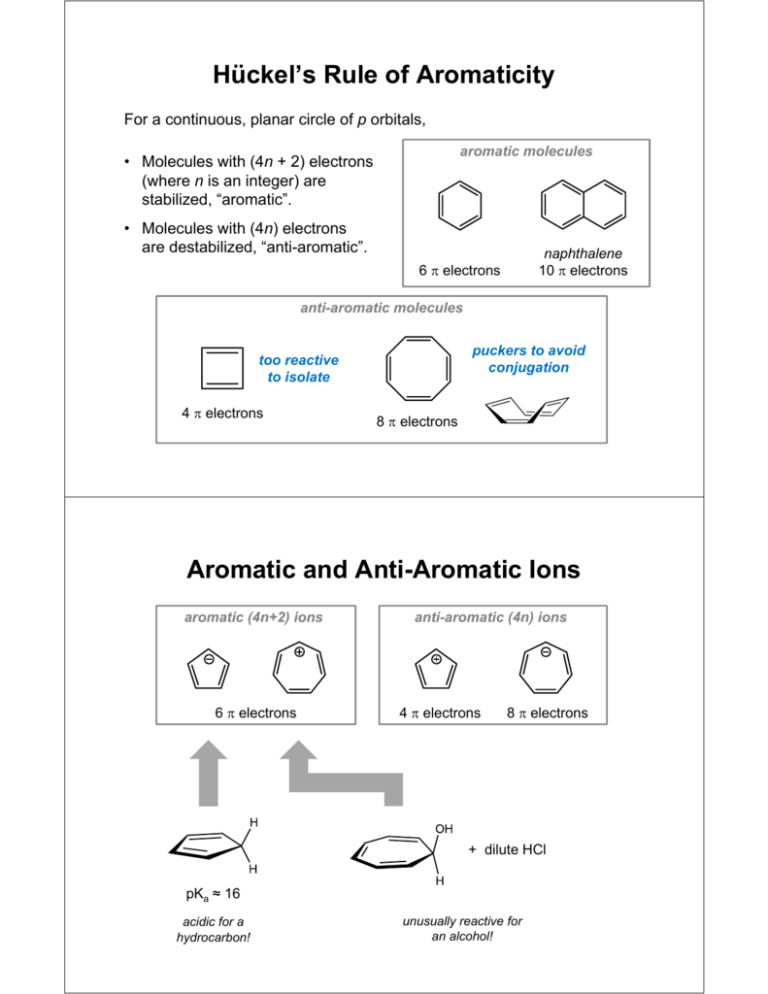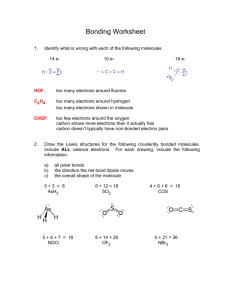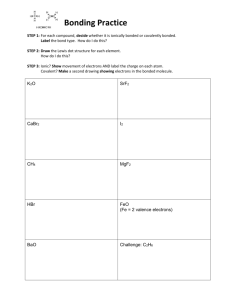Hückel's Rule of Aromaticity Aromatic and Anti
advertisement

Hückel’s Rule of Aromaticity For a continuous, planar circle of p orbitals, aromatic molecules • Molecules with (4n + 2) electrons (where n is an integer) are stabilized, “aromatic”. • Molecules with (4n) electrons are destabilized, “anti-aromatic”. naphthalene 10 electrons 6 electrons anti-aromatic molecules puckers to avoid conjugation too reactive to isolate 4 electrons 8 electrons Aromatic and Anti-Aromatic Ions aromatic (4n+2) ions 6 electrons anti-aromatic (4n) ions 4 electrons 8 electrons + dilute HCl pKa ≈ 16 acidic for a hydrocarbon! unusually reactive for an alcohol! Hückel’s Rule of Aromaticity For a continuous, planar circle of p orbitals, aromatic molecules • Molecules with (4n + 2) electrons (where n is an integer) are stabilized, “aromatic”. • Molecules with (4n) electrons are destabilized, “anti-aromatic”. naphthalene 10 electrons 6 electrons anti-aromatic molecules puckers to avoid conjugation too reactive to isolate 4 electrons 8 electrons Aromatic Heterocycles Heterocycle: A ring containing atoms other than carbon. (“Heteroatoms”. Typically N, O, S, or P.) aromatic heterocycles tryptophan 10 electrons furan 6 electrons pyridine 6 electrons Hybridization of heteroatoms is determined by aromaticity. non-aromatic heterocycle Aromaticity by Resonance Is this molecule aromatic? • Check to see if orbital system is contiguous. • Check resonance structures. If any of them have (4n+2) electrons, the molecule is aromatic. Naming Disubstituted Benzenes 1,2-dichlorobenzene ortho-dichlorobenzene o-dichlorobenzene 1,3-dichlorobenzene meta-dichlorobenzene m-dichlorobenzene 1,4-dichlorobenzene para-dichlorobenzene p-dichlorobenzene




